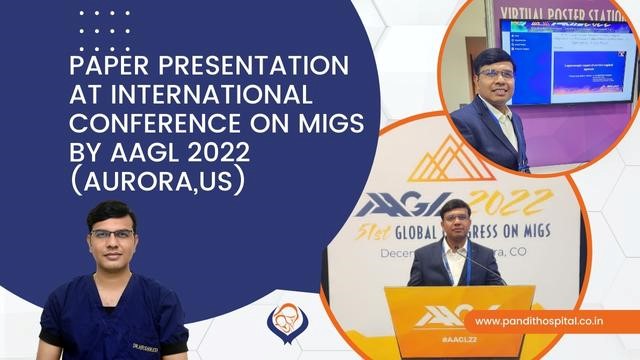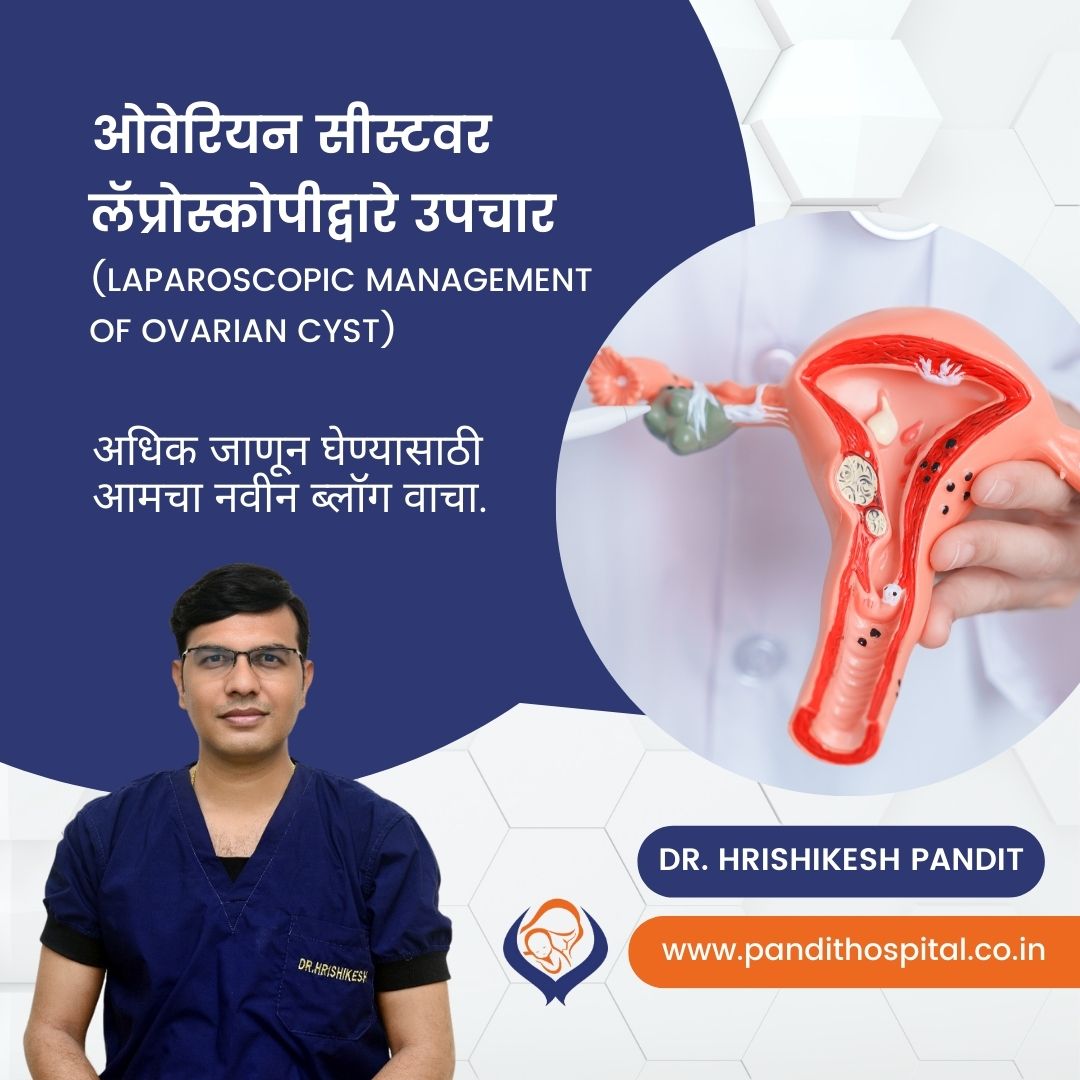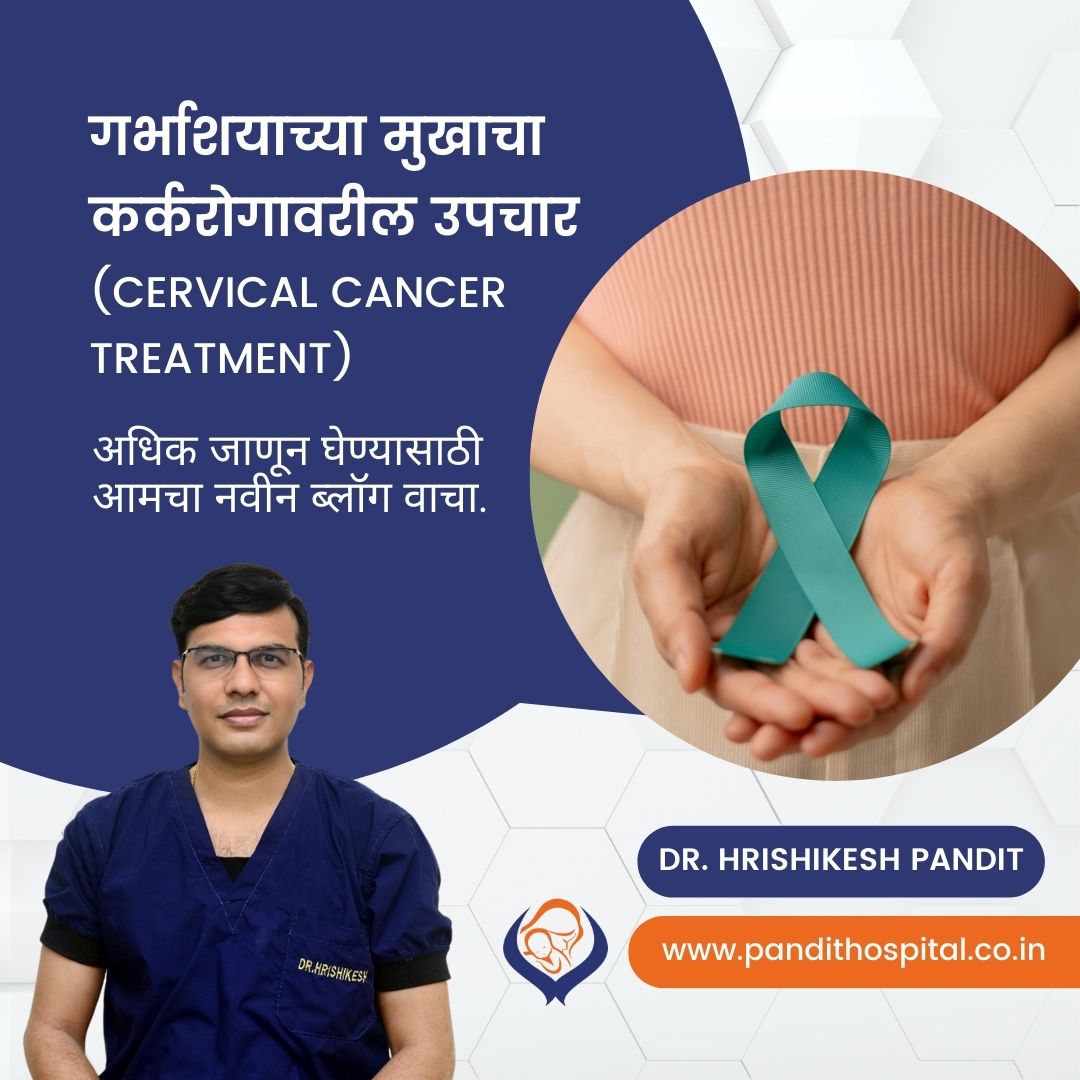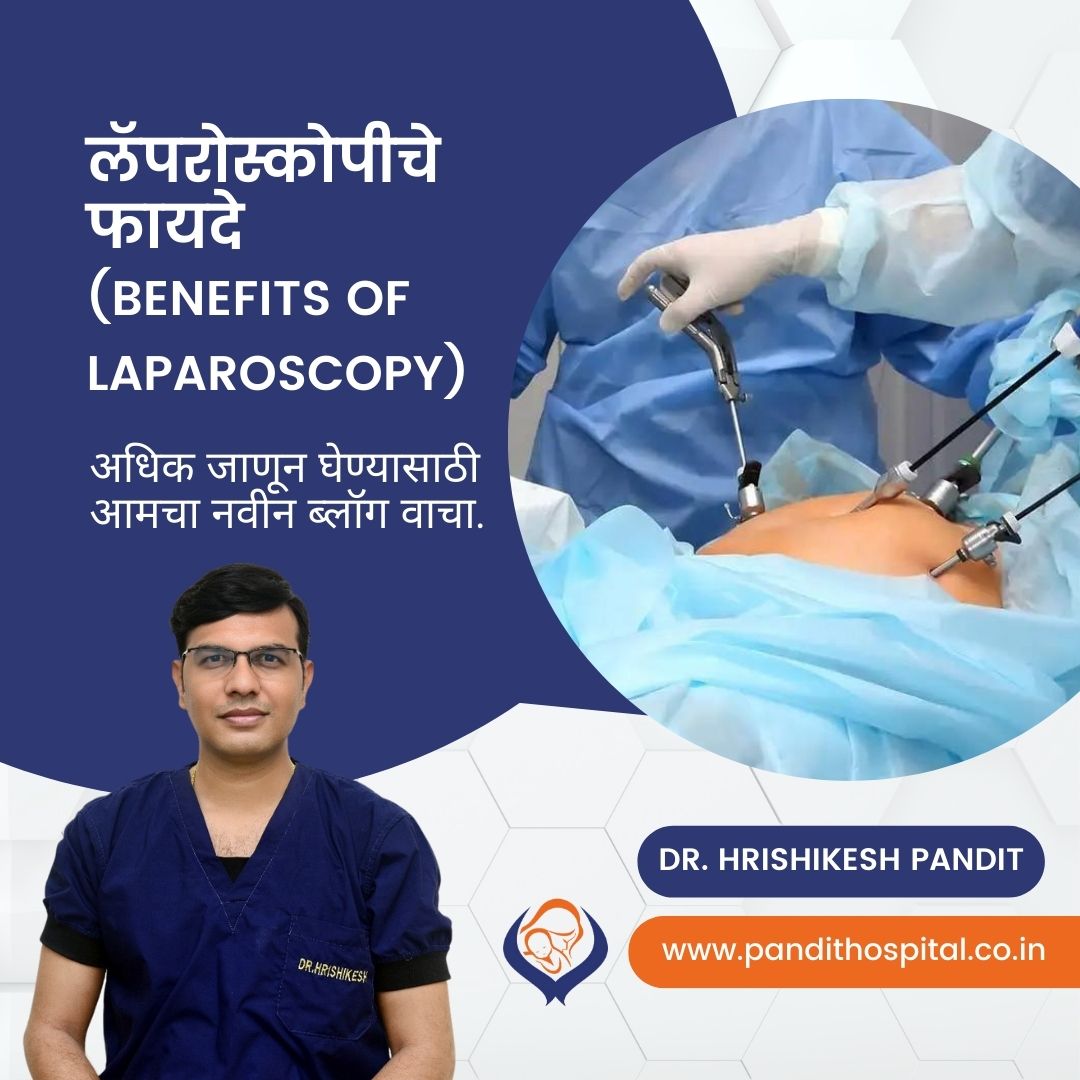Dr. Hrishikesh pandit of Pandit Hospital (Ahmednagar) recently attended a prestigious gynecologic laparoscopy conference by AAGL (American Association of Gynecologic Laparoscopists) on MIGS (Minimally Invasive gynecologic Surgeries) at Gaylord Rockies Resort and convention center (Aurora, Colorado, US) from 1st to 4th December.
He is one of the very few doctors from India who got selected to present case reports in front worldwide audience of leading gynecologic laparoscopists.
AAGL is the largest medical society focused on gynecologic surgery, with an international membership of over 7,100 physicians and healthcare providers committed to advancing minimally invasive gynecologic surgery (MIGS). AAGL’s Annual Global Congress is the premier scientific program that provides the world’s finest gynecologic surgeons with the latest education and best practices in MIGS.
AAGL is the largest medical association advancing health care for women through excellence in clinical practice, education, research, innovation, and advocacy. In 1971, Dr. Jordan M. Phillips and ten charter members founded the American Association of Gynecologic Laparoscopists. An early adopter of the laparoscopic surgical technique, Dr. Phillips was a visionary who imagined an infinite future for gynecologic surgery.
This year annual congress by AAGL 2022 was organized at Gaylord Rockies Resort and convention center (Aurora, Colorado, US) from 1st to 4th December. It was attended by renowned gynecologic laparoscopists from USA and around the world from 110 different countries.
Dr. Hrishikesh Pandit has more than ten years of experience in the field of Gynecologic Laparoscopy.
He has performed many complicated cases and his techniques have been appreciated by many expert gynecologic laparoscopists from India. He has done fellowships from prestigious universities from Germany, France & UAE.
He presented two cases at this annual event which was much appreciated by many gynecologic laparoscopists.
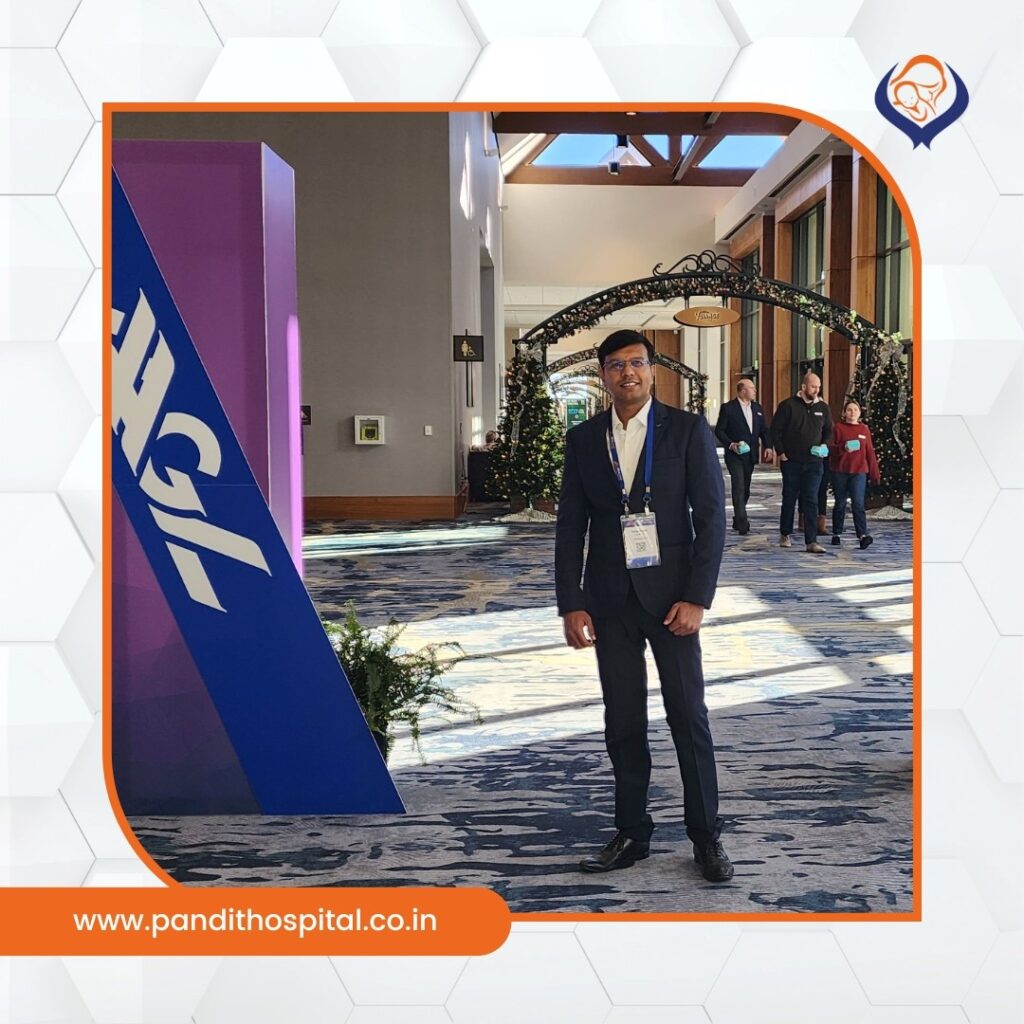
Case 1: Laparoscopic Repair of Cervico-Vaginal Agenesis in a Previously Failed Attempt of Mcindoe's Vaginoplasty.
Study Objective: A unique Laparoscopic approach for surgical repair of Cervico-vaginal agenesis.
Design: A case report with 6 months follow-up
Setting: laparoscopy surgery with patient in lithotomy position under anaesthesia.
Patients or Participants: A 23 yrs old female came with primary amenorrhea with lower abdominal pain since 2 years.
Her MRI was sugggestive of
1) upper 2/3rd vaginal aplasia with hematoma in the cervical canal
2) b/l hematosalpinx
3) b/l ovarian hemorrhagic cysts.
McIndoe’s Vaginoplasty was attempted 6months back which had failed.
Interventions: Laparoscopic cervico- vaginal agenesis repair was planned
Measurements and Main Results: The occurrence of cervical agenesis is quite uncommon (1:80 000–1:100 000) and only 39% of these cases simultaneously have vaginal agenesis. Initially, these cases were managed by hysterectomy or abdominal cervicovaginoplasty. Later, a minimally invasive approach came to light with the advent of laparoscopy and surgical expertise
Principles of surgery:
Laparoscopic management of Hematosalpinx and hemorrhagic cysts.
Dissection of UV fold and pushing the bladder down to expose 3-4 cm length of the vagina.
Dissection between cervix and vagina in the right plane.
Creating neo-vagina by dissection of the vaginal agenesis.
Vertical incision on the cervix and horizontal incision on the vagina
Suturing techniques between cervix and vagina and placing a silicon catheter in cervical canal and neo-vagina.
Conclusion: Laparoscopic approach for cervico vaginal agenesis is better than vaginal approach with cutting cervix vertically for patency of cervical cannal.
Case 2: Total Laparoscopic Cervical Encerclage in 16 Weeks Pregnant Uterine Didelphis Uterus
Study Objective: To demonstrate Laparoscopic approach for encirclage in pregnancy in a ℅ uterine didelphys
Design: A case report
Setting: laparoscopy surgery with patient in lithotomy position under anaesthesia
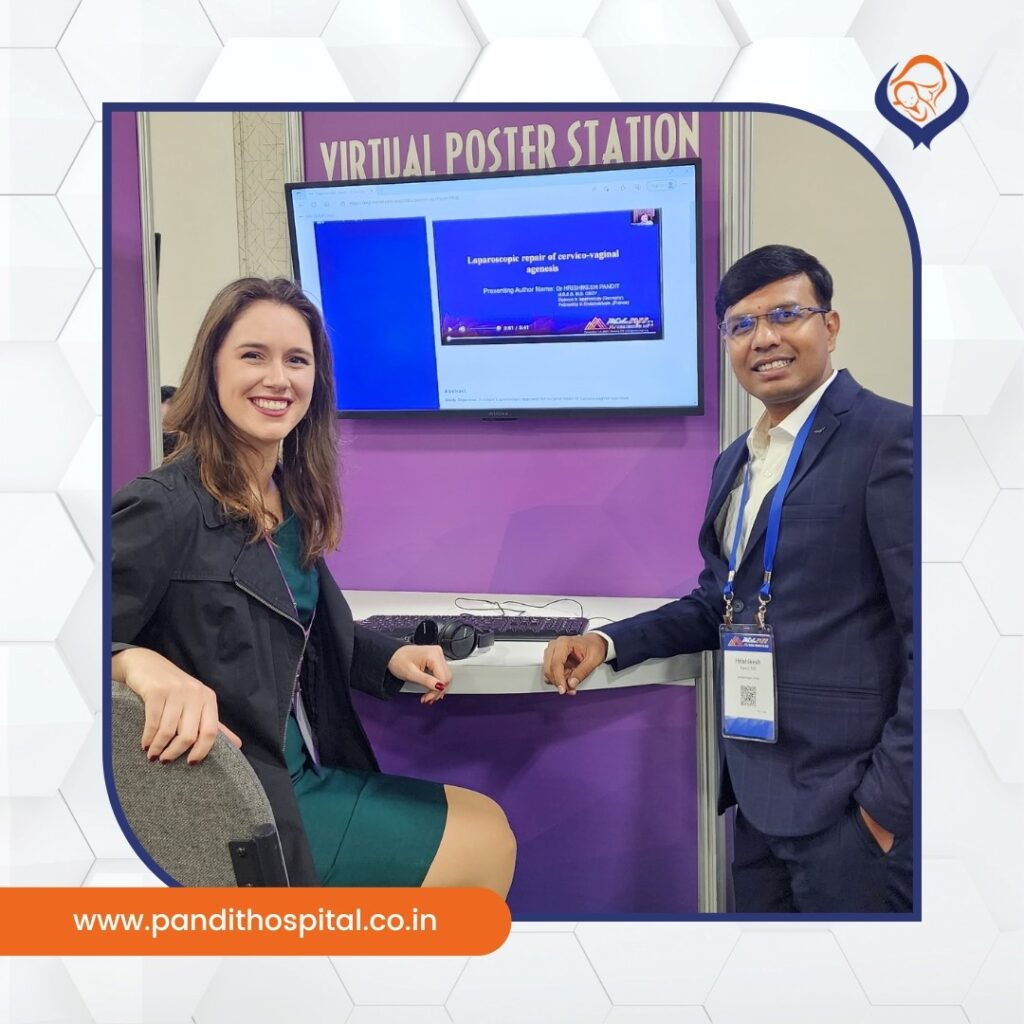
Patients of Participants: A 26 yrs old female came G3 A2 with previous 2- 2nd trimester abortions with failed vaginal encirclage and uterine didelphys diagnosed on MRI with 16 weeks pregnancy.
Interventions: Laparoscopic cerclage was planned using merselene tape
Measurements and Main Results: Cervical insufficiency (CI) or incompetence is a well-known condition in obstetrics with an incidence of 0.1–1%, and is notoriously associated with a high risk of second trimester abortion and/or preterm delivery.
The traditional surgical treatment for cervical insufficiency consists of vaginal placement of cervical stitches, known as transvaginal cervical cerclage (TVC).
Advances in the field of minimally invasive surgery resulted in development of a new approach to cervical cerclage placement. Laparoscopic cerclage offers the benefit of reduced blood loss, reduced postoperative pain, and fewer adhesions, as well as decreased length of hospital stay and overall faster recovery time.
Principles of surgery:
- Dissection of loose UV fold of peritoneum.
- Creation of window in the broad ligament on both sides.
- Passing the needle of merselene tape from medial to the uterine artery of left side at the level of internal os.
- Passing the merselene tape all around the uterus
- Passing the needle of merselene tape from medial to uterine artery on right side.
- Tightening the merselene tape at the level of the internal os
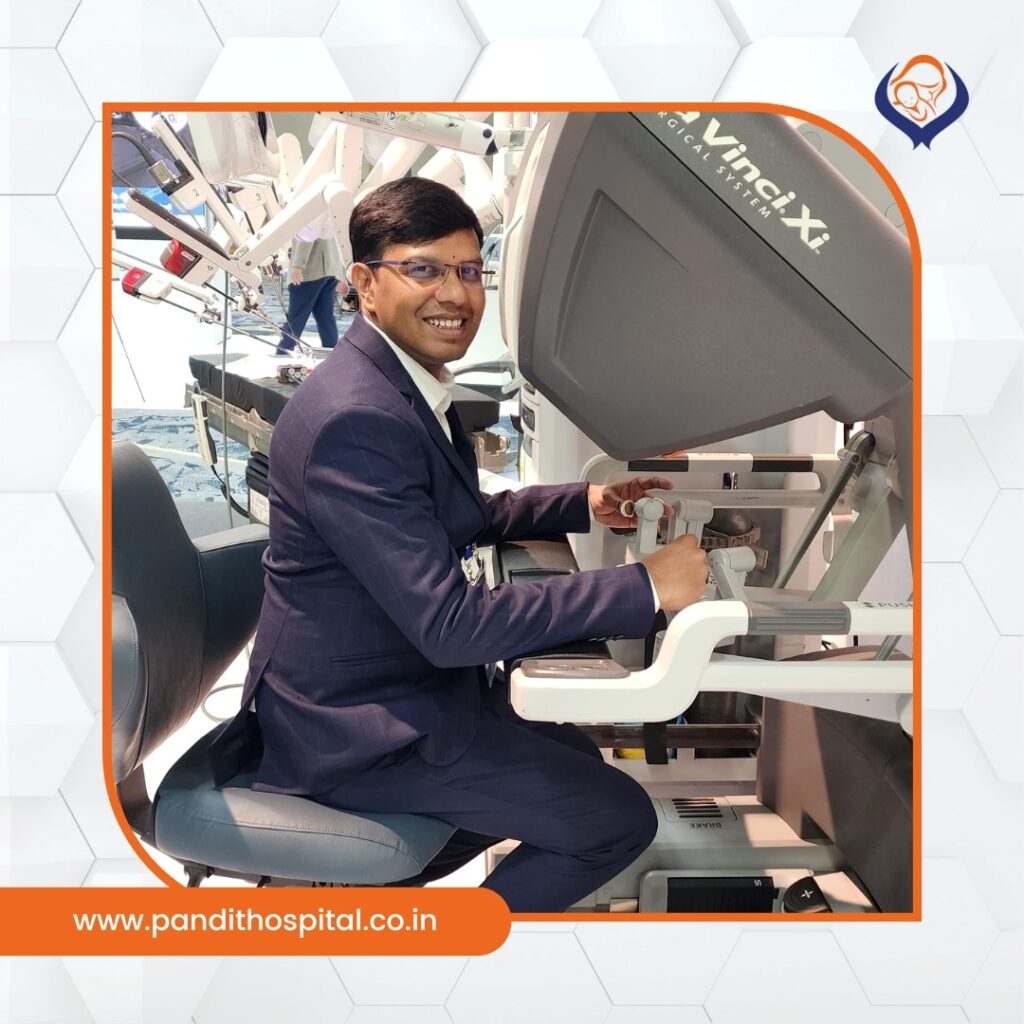
Conclusion: Similar to the transabdominal approach, laparoscopic cerclage can be placed during pregnancy or as an interval procedure. Success rates for laparoscopic cerclage were reported in the range of 76% to 100%.
He was aided by Dr. Ayesha Ansari to prepare both the reports.
Checkout glimpses from his US visit, click here.
Dr. Hrishikesh Pandit is the pioneer pf 3D laparoscopy technique in Ahmednagar. His experience and skill makes him one of the best laparoscopic surgeon in India.
At Pandit Hospital, you are in safe hands!
To consult Dr. Hrishikesh Pandit, Click Below,
Pandit Hospital – Best Maternity care center in Ahmednagar
LET’S SEE OUR INTRO VIDEO
At Pandit Hospital, we provide all the maternity services from antenatal to postnatal period under one roof
Let's Connect!!
Nagar - Pathardi Road, Bhingar, Ahmednagar, Maharashtra, India 414002
0241-2441717 / 0241-2442344
About author:
Dr. Hrishikesh Pandit:
Dr. Hrishikesh Pandit is one of the best obstetrician and gynecologist in India. He is also a well-renowned Laparoscopic surgeon. He obtained his MS (Ob Gyn) degree from the prestigious Pravara Institute of Medical Sciences. He has also done fellowship and diploma courses in laparoscopic surgeries and cancer treatment from Tata Hospital and Keil University, Germany. His surgical cases, papers and videos has been chosen in many international forums of gynecology.

Why Pandit Hospital?
At Pandit Hospital, we are always working hard to provide its patients with the highest level of medical innovation and patient care. With the aim of delivering complete maternity & gynecological care under one roof with the help of all contemporary amenities and cutting-edge medical equipment. Dr. Hrishikesh Pandit has a vision to bring the best of facilities regarding laparoscopy surgeries in the city of Ahmednagar. He is the pioneer of 3D Laparoscopy technology is Ahmednagar.
Latest Articles
Dr. Hrishikesh Pandit is one of the best laparoscopy surgeons in India. His determination to bring 3D Laparoscopy technology to Ahmednagar has eventually helped so many patients. Read the latest articles by Dr. Hrishikesh Pandit on Gynecology, gastric issues, and health tips for mothers during pregnancy.
Discover comprehensive ovarian cyst treatments at Pandit Hospital in Ahmednagar, Maharashtra, led by 3D Laparoscopic Surgeon Dr. Hrishikesh Pandit. Learn about types, symptoms, and both surgical and non-surgical treatments. Best ovarian cyst removal hospital in India.
गर्भाशयाच्या मुखाचा कर्करोग हा महिलांमध्ये होणारा दुसरा सर्वात गंभीर कॅन्सर आहे. वयाच्या 35 व्या वर्षानंतर या आजाराचा धोका फार वाढतो. गर्भाशयाच्या कर्करोगावर लॅपरोस्कोपी (दुर्बिणीने) शस्त्रक्रियेद्वारे उपचार केले जाऊ शकतात.
लॅपरोस्कोपिक शस्त्रक्रियेचे अनेक फायदे आहेत ✔ कमी वेदना ✔ कमी रक्तस्त्राव ✔ रुग्णालयात किमान मुक्काम ✔ जलद रिकव्हरी ✔ कमी कॉम्प्लिकेशन्स ✔ कमी टाके ✔अंतर्गत अवयवांना कमी इजा. Benefits of laparoscopy &Marathi)
FAQ
You should consult a doctor during the first 6 to 8 weeks of your pregnancy, or when your period is 2 to 4 weeks late.
If your contractions are 5 minutes apart, lasting for 1 minute, for 1 hour or longer, it’s time to head to the hospital.
Doctors recommend an infertility evaluation if you have not gotten pregnant after 1 year of having regular sexual intercourse without using birth control. If you are older than 35, an evaluation is recommended after 6 months of trying.
Yes, You can. But most babies need 39 weeks to develop fully. Induced or planned delivery before that time—without a valid medical reason—is not in the best interest of the baby or the mother. After 39 weeks you can plan delivery.
Women who are 21 to 29 should have a Pap test alone every 3 years. HPV testing alone can be considered for women who are 25 to 29, but Pap tests are preferred. Women who are 30 to 65 have three options for testing. They can have a Pap test and an HPV test (co-testing) every 5 years. They can have a Pap test alone every 3 years. Or they can have HPV testing alone every 5 years.
Laparoscopic hysterectomy is a safe and suitable procedure for chosen patients. It affords patients advantages like less peri-operative morbidity, better life quality, shorter hospitalization time, and faster return to activity.
Schedule a doctor’s visit if you have: Greenish, yellowish, thick or cheesy vaginal discharge; Strong vaginal odor; Redness, itching, burning or irritation of your vagina or the area of skin that surrounds the vagina and urethra (vulva); Bleeding or spotting unrelated to your period.
Painless delivery can be achieved using a form of regional anesthesia that provides pain relief during natural labor. Epidural anesthesia is administered through an injection on the lower back of the mother. The drug takes about 10-15 minutes to take effect.
Even in severe cases of endometriosis, most can be treated with laparoscopic surgery. In laparoscopic surgery, your surgeon inserts a slender viewing instrument (laparoscope) through a small incision near your navel and inserts instruments to remove endometrial tissue through another small incision.
The HPV vaccine is recommended for routine vaccination at the age of 11 or 12 years. (Vaccination can be started at age 9.) It is also recommended that vaccination for everyone through age 26 years if not adequately vaccinated when younger. HPV vaccination is given as a series of either two or three doses, depending on age at initial vaccination.

